mossArchitects celebrates the holiday with a friendly challenge. The office split up into three teams to create entirely edible homes out of cookies, candies, and icing. The results: delightful, creative, as well as a heck of a lot of fun.
Going for Gingerbread House Gold at mossArchitects
Employees at mossArchitects, one of Pittsburgh’s premier collaborative design studios, took time out of their busy schedules to join in a highly charged gingerbread house competition — all in good fun, of course. The company, founded in 2006 by Andrew Moss, seemed the perfect candidate for such a lighthearted rivalry, since the firm regularly aims to celebrate the uniqueness of each project and team member, and creativity is what they value most. In fact, the firm strategically chose its Penn Avenue address to be in the middle of a Garfield arts district that hosts monthly “First Friday” showcases of local talent.
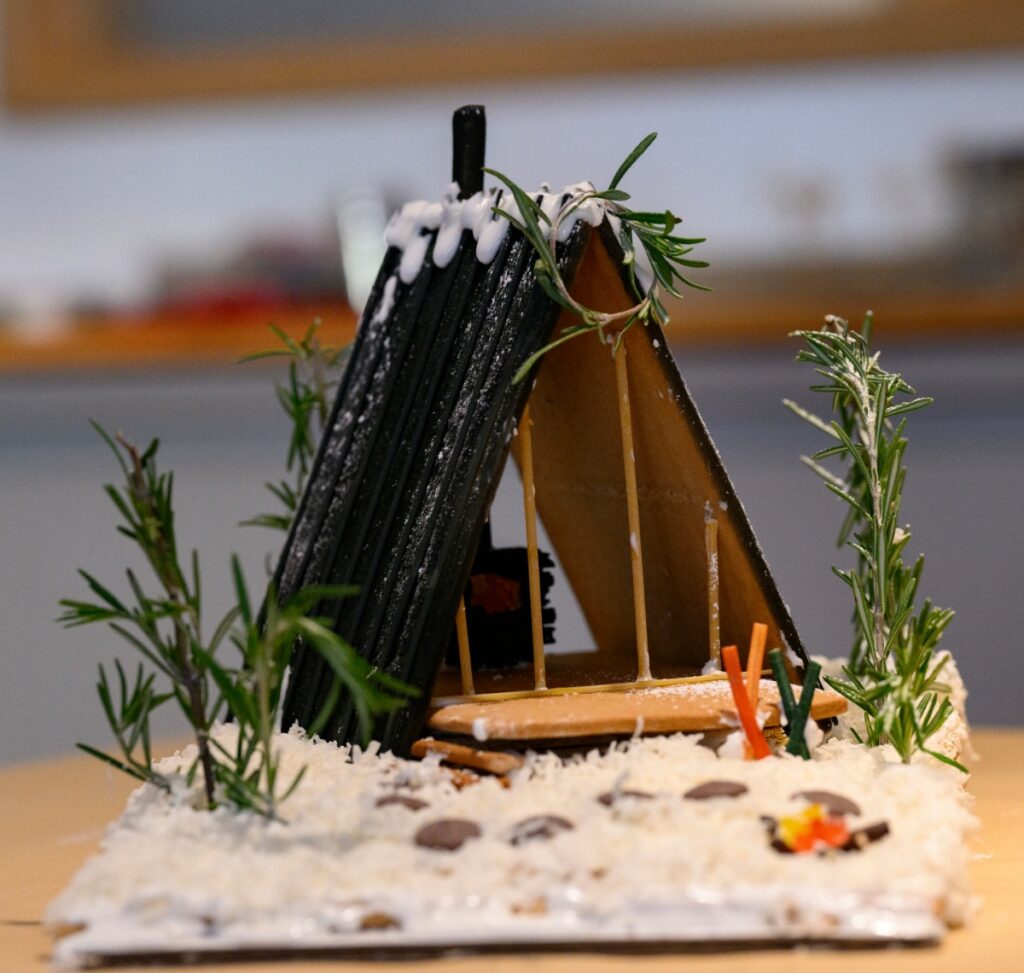
Ahead of competition day, each team received a list of rules stating that all ingredients must be purchased for under $50, and all items used must be edible. Their designs also needed to fit on a 14-by-10- inch cardboard base (quarter-sheet cake size). And while wintry designs were encouraged, the houses didn’t have to be overly holiday-centric.
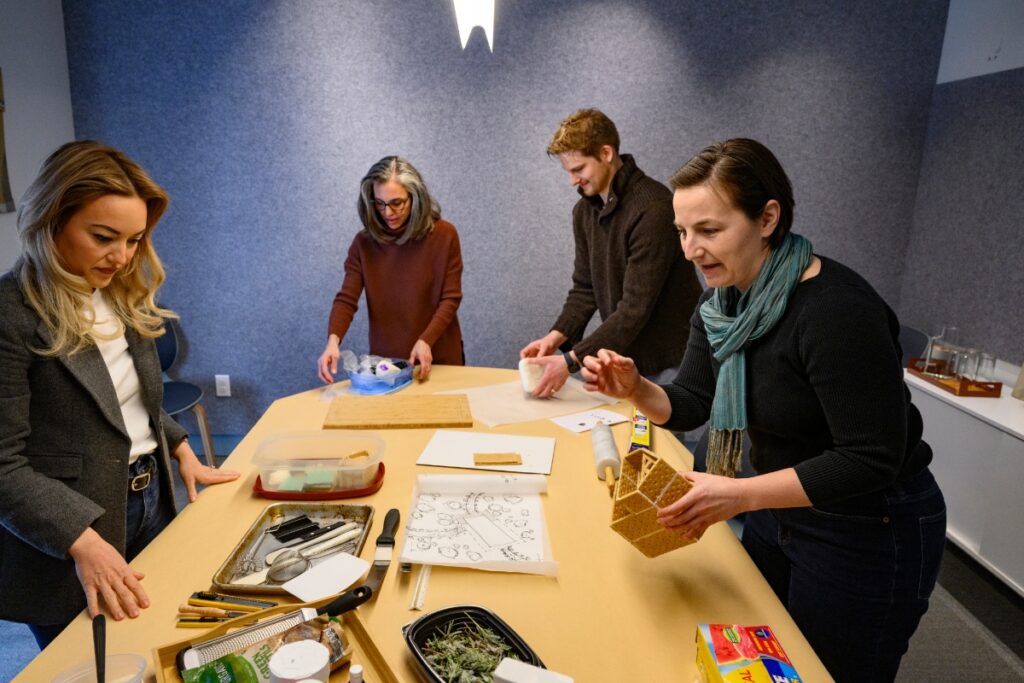
Competition Time
On design day, each team had about an hour to build its creation. While the physical structure of the house could be pre-assembled, all decorating and landscaping had to be completed during that designated time. Each team then had five minutes to “pitch” their masterpiece to the entire office and judges — artist Rachel Saul Rearick (Executive Director at Contemporary Craft and adjunct faculty member at Carnegie Mellon University), Wendi Troy (Senior Account Representative for Mont Surfaces by Mont Granite), TJ Stauffer (Director of Design and Development at Allegheny Millwork & Lumber), and TABLE’s Editor in Chief, Keith Recker. Judges ranked each structure based on three categories: inventive use of materials, innovative concept/theme, and visual appeal.
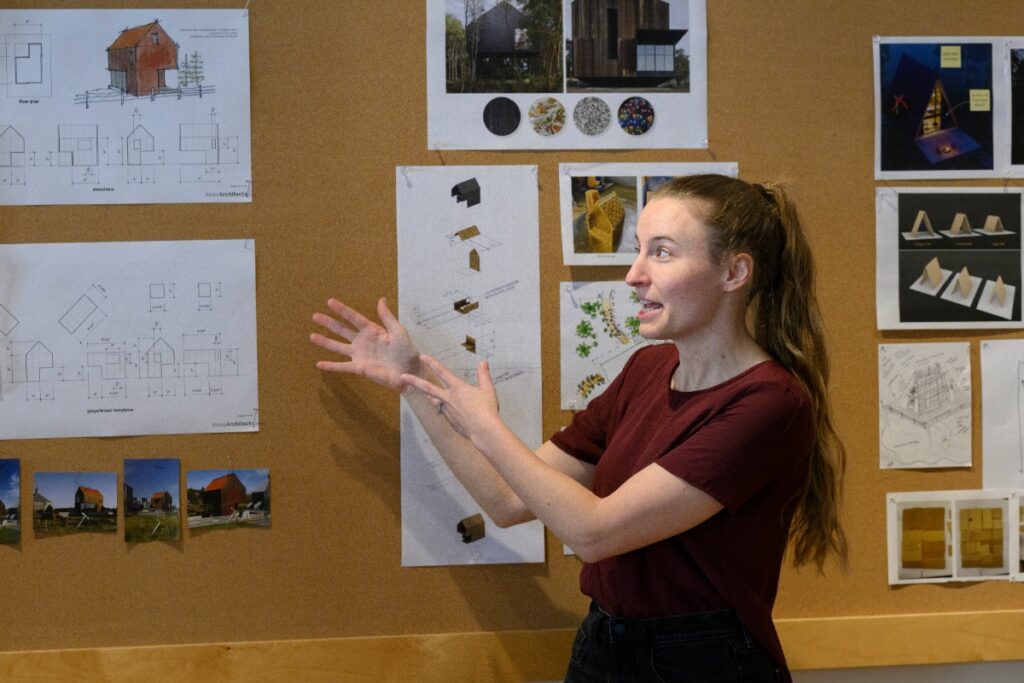
The worker bees gathered in three different areas of the airy office, throughout which laughter, banter, and holiday music flowed. Yet there was also serious consultation and technical maneuvering happening, as the three teams brought their sketched-out visions to life.
Team One
Team One consisted of Annie DeArmit (captain), Andrew Moss, Becca Murden, and Howard Moss, who collectively created a minimalist, contemporary take on the traditional gingerbread house form. “While maintaining classic aspects and ingredients, we wanted to take a mossArchitect’s perspective with the inspiration of a previous project,” explains DeArmit. Based on proportion and use of materials, they were able to mimic the exterior panels and (homemade sugar) glass corner of the house. They also aimed to focus on textures and aroma, with the help of ingredients like rosemary, coconut and almonds, plus fun additions like a jalapenoand-cloves mini-wreath. They found it a fun and light way to explore entirely different types of building materials.
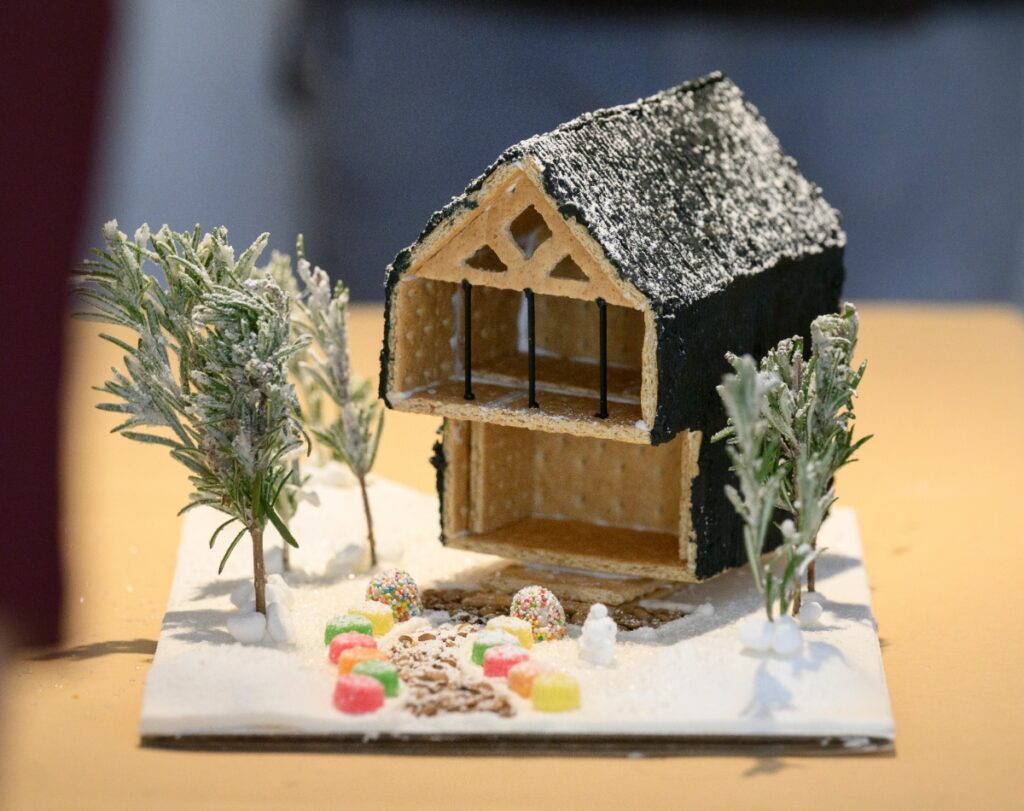
Team Two
Team Two — the ultimate winners — involved Emily Rice (captain), Nick Coppula, Gina Konopack, and Rachel Laurent. Rice explains that their house focuses on contrasts. “A cozy interior looking out into a frosted forest, black cladding in a snowy white landscape, a simple form with a compelling gesture,” Rice says. After initial testing, they chose graham crackers for their uniformity and sturdiness, with trimmed-off ends as a textural accent on the front facade. Their innovative landscape featured dried lentils and couscous, and sugared rosemary and gumdrops created the snowy forest. Though they’d broken down prep work into manageable pieces for each teammate to tackle, it proved challenging to have four pairs of hands working at once. Yet they figured it out. “This reminded us of being in design school!” Rice gushes.
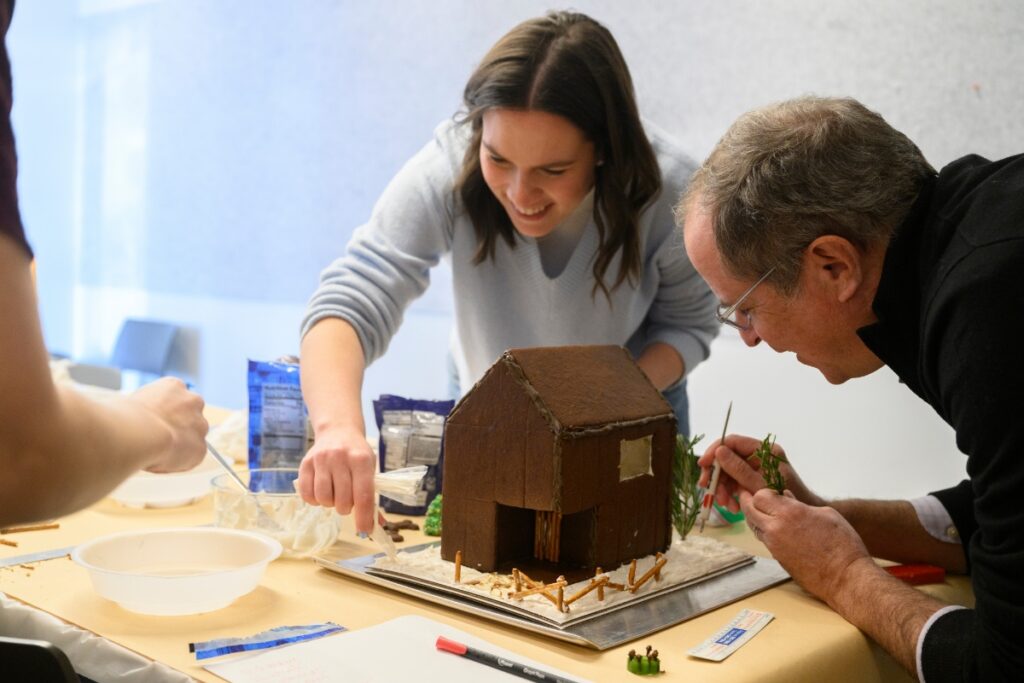
Team Three
Team Three — consisting of Katie Seftas (captain), Jim Bischoff, and Katie LaForest — created ‘’Slope Haus,” a contemporary A-frame ski chalet. Although it felt tough to find edible materials to represent building materials at such a small scale, eventually discovering what worked was the highlight. “We chose to test various materials and methods, which was perhaps as rewarding (if not more so) than the final result,” Seftas says. Their clever ingredients ranged from linguine pasta (for the standing seam metal roof and skis) and bucatini pasta (window mullions) to Pocky (outdoor fireplace logs) as well as rock candy (fire). Edible spray paint and glue saved the day, too.
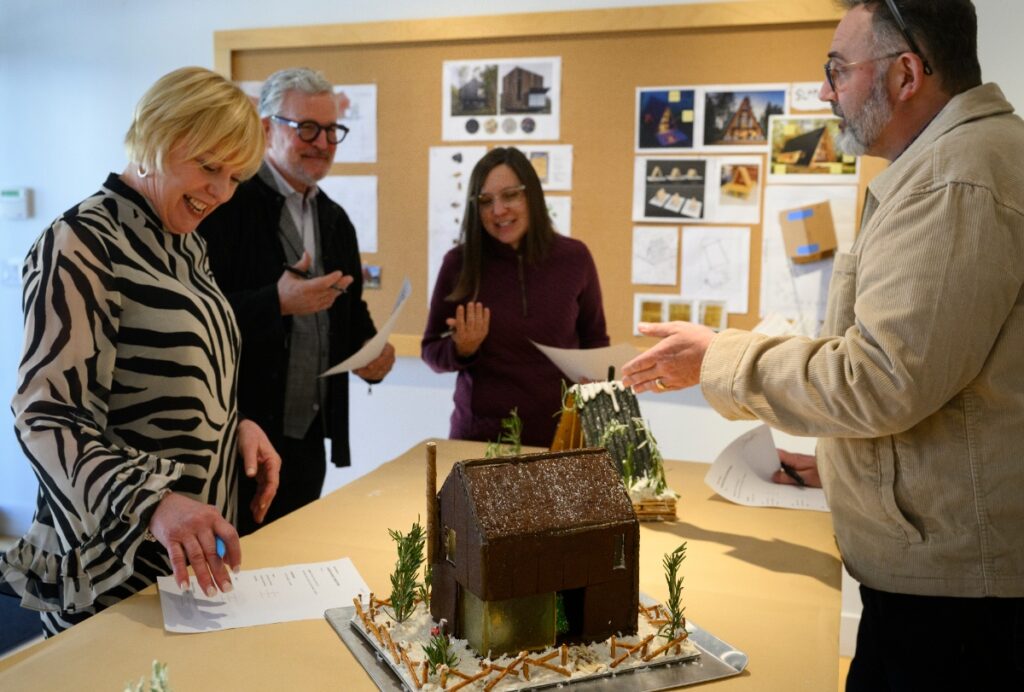
Judges and participants munched on delicious finger foods from Graze Graze North Pittsburgh and contest-themed cookies from Sweet Talkers Sweets. Everyone merrily shared their impressions of the three cookie houses. A good time was had by all!
Story by Corinne Whiting
Food by Graze Craze
Photography by Jeff Swensen
Subscribe to TABLE Magazine’s print edition.
